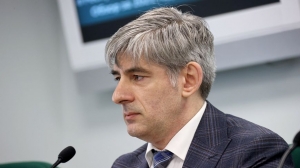How countries share information about nuclear safety?

The global nuclear safety regime looks like a two-way road. In addition to informing the international community Belarus can get information about the nuclear installations it is interested in.
“Certainly, those are primarily installations in neighboring countries. There are nuclear power plants and some of them have been shut down and are not operational and there are also other facilities that represent a radiation hazard,” said Oleg Sobolev, a consultant with the Nuclear and Radiation Safety Department of the Belarusian Emergencies Ministry (Gosatomnadzor).
Such facilities are outside Belarus' national jurisdiction but their state is extremely important for the country since they are so close. Global nuclear safety regime tools help obtain the relevant information. The first component is international conventions, treaties, and agreements. The second one is the national legislation and its development according to the requirements of the International Atomic Energy Agency. The third one is international evaluation missions and peer reviews. The fourth one is interaction of the professional community on a multilateral basis and a bilateral one, including interaction between regulatory bodies of different countries.
The official continued: “We can peruse national reports of other countries, for instance, those of Lithuania and Poland. We can analyze them, ask questions, and make comments. Countries definitely give answers to these comments. Then delegations convene in Vienna, in the headquarters of the International Atomic Energy Agency in order to discuss things that are unclear after remote perusal of the national reports. And we can come to hear the defense of a national report of Poland, we can participate and ask questions. Thus, we get all the information we are interested in.”
As for evaluation missions and peer reviews, the resulting documents of most of them are publicly available. “The documents resulting from stress tests organized according to the European procedure also get published. We study and analyze all of it,” Oleg Sobolev added.
Another important tool is the International Atomic Energy Agency's information sharing systems, in particular, a unified system for sharing information about incidents and emergencies. “It is primarily designed for prompt information sharing when things happen. We have access to the system, we see all the information which is submitted to the system. We also participate in other information-sharing systems of the International Atomic Energy Agency. We analyze what we are interested in,” the official said.
Belarus can also use bilateral mechanisms. Agreements have been signed with neighboring countries to enable the sharing of information about nuclear and radiation safety matters. Apart from that, Gosatomnadzor studies public sources – websites of foreign regulatory agencies.
“The versatility of the tools allows us to get the necessary information even if problems arise. For instance, when we send a letter and request data but receive no answer,” Oleg Sobolev said.
Gosatomnadzor representatives noted that radiation-hazardous facilities in neighboring countries have had no substantial negative effect on Belarus' territory or population in the last 12 months.













